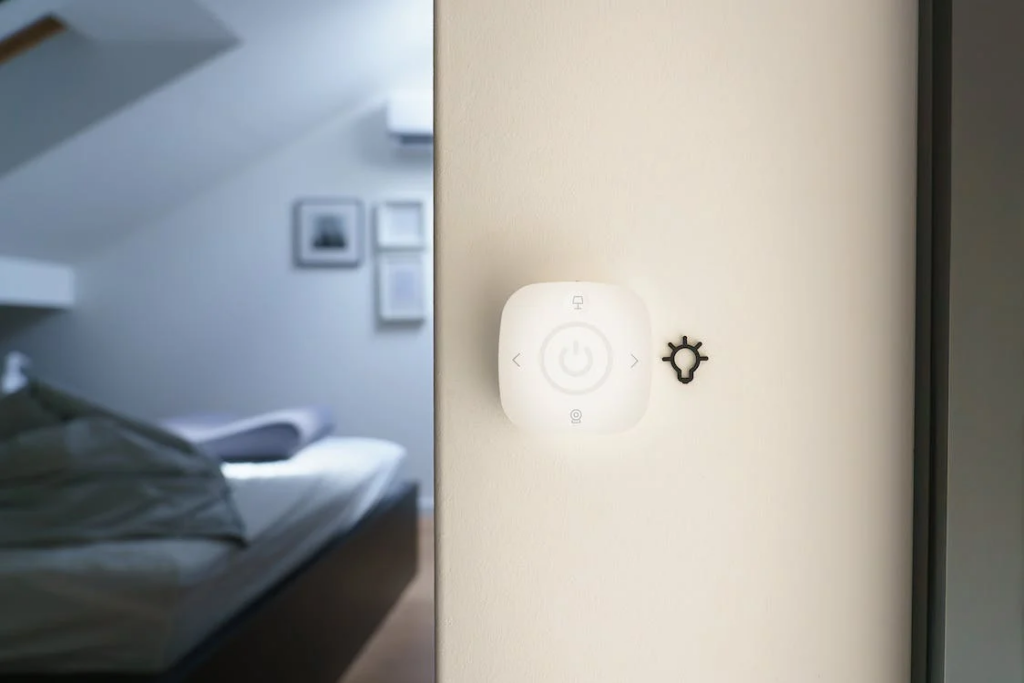The emergence of the Internet of Things (IoT) has revolutionised communication, business, management, and logistics in the digital age. It is now possible to connect almost any IoT device, from smartphones and sensors to industrial equipment and refrigerators, into networks that enable remote control and real-time feedback.
These connections offer tremendous potential for automation, data collection, and analysis – yet it also increases vulnerability to cyber attacks. The culprits are often weak authentication and lack of encryption in many devices; as organisations rely ever more heavily on automated processes using connected devices, cybersecurity in IoT has become an increasingly pressing issue.
Table of Contents
What is IoT?
The Internet of Things (IoT) is a large network of physical objects or “things” equipped with embedded computing systems such as processors, transistors, software, sensors, and communication hardware. This enables them to collect data from their surroundings and interact with other connected objects by sharing this data over local wireless LANs or through the Internet if required.
This intelligence helps these Internet-enabled objects, hence referred to as smart devices, significantly enhance operational performance. Organisations are granted a wide range of possibilities, such as controlling energy consumption remotely and automating manufacturing processes, among many others.
Why IoT security is a pressing issue
Ever more connected devices are being applied to business processes, and as such, the security of Industrial IoT (IIoT) applications has emerged as a serious issue. With no industry standard on authentication and encryption, many connected devices need more basic security features. Additionally, legacy systems continue to be vulnerable targets as they often need to be patched or are secured with outdated protocols.
The main challenge in securing connected devices is that most systems have very limited memory and processing power, since they often run on small microprocessors due to size constraints.
This makes it difficult to implement traditional security measures such as intrusion detection systems (IDS), application firewalls, and encrypted communication protocols. Another point of concern is the ‘smart home’ trend, where a single device can control multiple other connected appliances. This further complicates security as each device provides multiple potential entry points for attacks.

Complexity and diversity in the IoT ecosystem
The IoT ecosystem is characterised by the high complexity and diversity of connected devices. There are a multitude of different wireless communication protocols in use, from Bluetooth and Zigbee to Wifi and LoRa. Many devices rely on proprietary operating systems or custom applications, making it difficult to apply standard security measures such as those for Windows or Linux.
Furthermore, data collected by IoT systems often passes through multiple layers, which can include various software services, such as third-party cloud storage providers used for analysis. The large number of heterogeneous protocols used, coupled with complex multi-layer architectures, results in a significant challenge when it comes to securing the system against cyber attacks.
Challenges for IoT security
Despite the challenges, cyber security in IoT is essential to protect their data and systems from malicious actors. However, there are significant technical challenges that make proper security difficult to implement:
- Poor authentication and encryption: Many devices need to include basic security measures such as user authentication and encryption protocols. Even if the device includes authentication, it may need to be more secure due to a lack of two-factor authentication or password policy enforcement. Additionally, many legacy systems use outdated protocols such as WEP (Wired Equivalent Privacy), which are easily cracked by modern tools.
- Lack of effective monitoring tools: Due to the distributed nature of IoT networks, real-time monitoring is difficult and costly to implement as many sensors need to exchange data with their respective controllers in order for detection algorithms to be applied during operation. This makes it hard for organisations to detect malicious activities in time before it causes significant damage.
- Limited standardisation: The conflicting standards used by different connected devices create problems with interoperability. This results in a complex mix of proprietary solutions that can make deployment of comprehensive security solutions difficult even for experienced system administrators.
- Insufficient testing & patching procedures: Another challenge posed by IoT security is that most vendors need to provide timely patches or updates after vulnerabilities are discovered, making them more exploitable than mature web application frameworks such as Apache or IIS, which have well-defined patching lifecycles. This puts any organisation relying on such devices at risk from malicious actors.
- Poorly configured systems: Improper system configuration or separation of functionality based on user-level privileges can result in larger attack surfaces for malicious actors to exploit.
- Unconventional manufacturing and data handling: The diversity of connected objects and the unconventional manufacturing processes used to produce IoT-enabled devices can also create security issues. Most of these connected objects are manufactured in foreign countries, often where suppliers have limited cybersecurity resources and practices, which makes them more prone to hacking. Additionally, many IoT systems lack appropriate data management policies, which makes it easier for malicious actors to steal sensitive user data or hijack customer accounts.
- Endpoint security: Finally, the reliance on endpoint devices such as smartphones and tablets makes them attractive targets for malicious actors due to their lack of standard security measures. As smartphone users often use separate accounts to connect multiple connected devices, this further increases the risk of attack.
IoT connected devices security best practices
Organisations must take steps to ensure their connected systems are adequately protected against threats, both known and unknown. Below are some key best practices.
Implement proper authentication and encryption
The most basic and important requirement for security is the proper implementation of authentication and encryption protocols. Organisations should ensure that their systems are protected with strong passwords, two-factor authentication, wherever possible. They should also implement secure encryption methods such as TLS or SSL to protect data in transit.
Monitor the network regularly
Organisations must monitor network activity on a regular basis to detect potential threats, such as unauthorised access attempts or malicious modifications to configuration files. Additionally, organisations should have an incident response plan in place so they can take immediate action when required.
Secure connected devices configuration settings
Device configuration settings must be implemented correctly by setting access restrictions in order to limit user privileges only to the necessary functions. Furthermore, devices should also be regularly patched with updates from vendors which correspond closely with set policies laid out at a corporate level.
Secure data traffic
Organisations need secure data transmission solutions, whether it is software, hardware, or cloud-based repositories, aimed mainly at limiting any exposure of sensitive information while being transferred across networks.
Traffic must be monitored constantly during its transit between source and destination points using metrics such as packet inspection techniques, usage analytics, and connection tracking systems, among many others. This helps reduce the number of potential threat vectors present and thus improves the overall security of an organisation.
Create backup systems
Critical data should always be backed up regularly at multiple secure sites on a periodic basis. This ensures that the most recent version of data is always available in case assets are compromised or corrupted during transit. Having such a backup system in place will help organisations recover from cyber attacks more quickly as well as reduce long-term losses resulting from them.
VPN and firewalls
It is essential to implement appropriate virtual private networks (VPN) and firewalls as defence measures against potential cyber threats. VPNs not only provide a secure connection between IoT devices but also centrally control administrator access view activity logs in order to detect malicious actors.
Additionally, using a VPN such as NordVPN and Surfhark can help you access content that would otherwise be blocked by location or ISP restrictions (known as geo-blocking).
Firewalls, on the other hand, restrict which incoming connections are allowed based on specific set criteria, making it harder for attackers to penetrate critical systems.
Connected devices education and training
Workforce training is arguably the most important tool for building security practices in an organisation. All staff members who work with IoT systems should be properly educated and trained on the latest security measures. Regular awareness seminars can prove useful to update employees on the best practices for secure usage and installation of connected devices. Having a proper understanding of the potential risks associated with IoT systems and security measures to prevent them can go a long way to securing an organisation’s data.
Invest in manpower and resources
Organisations need to commit sufficient human and financial resources to cybersecurity programs. This includes hiring personnel with expertise in the relevant areas as well as investing in solutions that provide real-time monitoring, logging, and analytics of big data generated by connected devices.
Build proactive rather than reactive protocols
In the era of IoT, organisations must take defensive measures to ensure that their IT infrastructure is secured against cyber threats from malicious actors. Proper authentication and encryption protocols need to be deployed on all connected devices, while traffic needs to be constantly monitored for suspicious activity.
Staff should be regularly trained in security best practices and policies regularly reviewed so they are up-to-date with the latest changes in technology. Investing in manpower and resources can prove invaluable as it will help organisations stay ahead of modern-day cyber criminals trying to exploit vulnerable systems.
Such steps can form part of an effective risk management approach, which is essential for organisations relying heavily upon automated processes using connected devices.
Outvise is a unique global talent network with a focus on Business Tech. We are helping our clients to run with their new projects and digital transformation needs with a specific focus on the Telecom and Media space. We have already provided thousands of days worth of highly specialised expertise for industry-leading companies and management consulting firms across more than 20 countries.




No comments yet
There are no comments on this post yet.